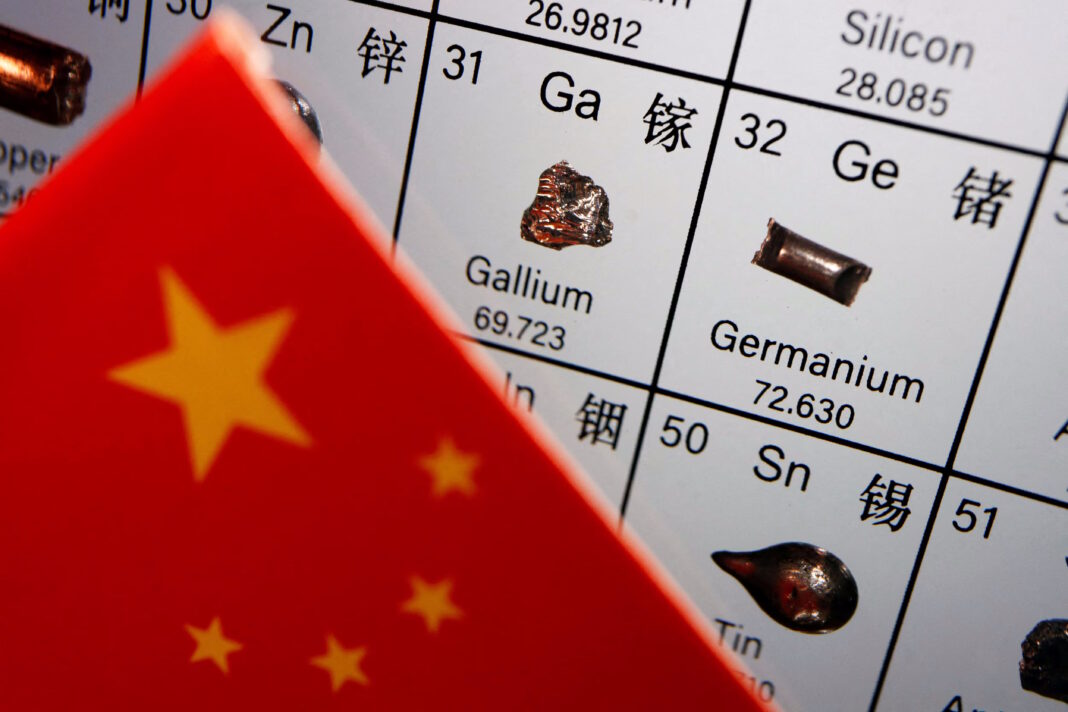GOOD MORNING FROM LONDON
CHINA RETALIATES AGAINST NEW US CONTROLS
ON TECHNOLOGY EXPORTS.
SOUTH CHINA MORNING POST
The subject sounds dull – computers etc. Here we go again – all that technical stuff.
Wrong – it is politically red hot.
“China’s new exports curbs are fuelling concern among Japanese businesses over the global supply of industrially important materials like gallium and antimony, especially with friction between Washington and Beijing expected to rise under the incoming Trump administration.
The Chinese Commerce Ministry on Tuesday announced a ban on exports of critical dual-use materials to the U.S., including gallium, which is used in chipmaking, and germanium, which is used for infrared light detection.
The move follows tougher U.S. controls on technology exports to China that were announced Monday.”
GRAHAM PERRY COMMENTS;-
THE WORLD PERSPECTIVE
The US and China are engaged in a tit-for-tat struggle. It could be a battle to the death if it leads to War and War cannot be ruled out.
Remember the global perspective. The US is the established #1 world power. It believes it now has a rival – China – a state that the US considers is trying to remove the US from its leading position. It isn’t. There is room for both – a US with more to offer the world and a China with even more to offer the world. But the US sees things differently.
Its leadership is unified on the existence of the challenge from China but it is divided on how to meet that challenge. The options are
familiar – War or Peace.
China knows it is a rising power. Its reach and influence is growing rapidly – especially in the US’s back garden, Latin America. Time confidently predicts that China will dislodge the US from its position as the #1 world economic power.
Washington has declared war on China – economic war – and it is becoming a bare knuckle fight.
There are those in Trump’s new administration who “want to take China out”. Regretting that they did not do so in the Korean War in 1950 and in the Vietnam War in 1965, this powerful part of the Eisenhower named ‘Military-Industrial Complex’ is increasingly of the view that China needs to be knocked out – sooner rather than later. Their whole strategy is to build up military power in the Far East.
THE ECONOMIC TIT-FOR-TAT.
Last Monday – 1 December 2024 – the US Commerce Department – focusing on China – expanded existing export controls on chipmaking equipment produced by American companies at foreign facilities.
Last Tuesday – 2 December 2024 – China retaliated with new export restrictions on key dual-use materials – gallium, germanium and graphite – which are vital for military and civilian technologies. The China response was issued within 24 hours of the US chipmaking restrictions.
Should we be worried? Yes.
US VULNERABILITIES
The hard facts;-
- China produces 98% of the world’s gallium and 60% of its germanium and holds an estimated 77% of all the natural graphite supply on the planet as of 2023, according to a US Geological Survey.
- From 2018 to 2021, China accounted for 54% of US imports of germanium and 53% of gallium, according to a March 2024 report by the US International Trade Commission.
- When Beijing announced the curbs last year, gallium prices surged by 27%. Since then, gallium prices have shot up by 80% and germanium by 50%
- And according to Chinese customs data, there has been no export of either wrought and unwrought germanium or gallium to the US in 2024 through October.
- The US is 100% and 50% reliant on imports for gallium and germanium respectively. For graphite, the US is also 100% dependent on imports.
- China controls about 77% of the world’s natural graphite supply.
Prashant Garg of Imperial College Business School in London said the export ban on gallium and germanium affected industries such as telecommunications, renewable energy and defence The materials are considered essential inputs.
“Gallium is integral to 5G infrastructure and satellite communication, while germanium is essential in fibre optics and infrared optics for defence applications,” explained Garg.
Changes to supply chains magnify these impacts because gallium plays a key role in many downstream industries, he added.
Garg said research he co-authored in November showed that materials like gallium are “central to global production networks [and] play a disproportionately large role in economic stability”.
Any disruption to their supply could “cascade through industries, increasing costs and causing delays in critical technologies” like AI and radar equipment.
Consumer costs would likely rise for smartphones, laptops and smart home devices as a result of Beijing’s decision, Garg added.
In the short run, “sourcing gallium or germanium from third countries would not provide a sustainable solution” because third countries would still rely on Chinese supply chains, increasing costs and risks, he said.”
CHINA VULNERABILITIES
But China has its own vulnerabilities especially with regard to semiconductors. Again according to the South China Morning Post – a world recognized informed publication – “Semiconductor development in China is facing more headwinds after Washington introduced new measures that restrict the export of 24 types of chipmaking equipment to the country and added 140 chip-related domestic entities to a US trade blacklist, according to analysts.
After China moved to ban the export of several rare earth minerals to the US, Beijing may intensify retaliatory measures by curbing the export of chemicals and conducting safety reviews of certain American companies, the analysts warn.
“The latest US controls will certainly choke China’s semiconductor development, which will lead to a supply shortage in the short term,” said Chen Li, an analyst with Beijing-based public policy consultancy Anbound, adding that the shortage would ease in three to five years.
The latest US controls affect 24 types of equipment for etching, wafer cleaning, ion implantation, inspection, and metrology – areas where China remains largely dependent on imports. High-bandwidth memory, a vital component in artificial intelligence (AI) chips, was also targeted.
“The new export controls mainly target the advanced-node chips used in AI, high-performance computing and 5G telecommunications,” said Zhang Junya, a senior analyst at LeadLeo who covers technology, media, and telecoms. “In the field of advanced-node chips, it is difficult for China to completely replace US technology in the short term,” he added.
CONCLUSION
China is vulnerable but the US is even more vulnerable and this is known to key decision makers in Washington and Beijing. There are two reasons;-
First, China may restrict the export of chemicals, such as neodymium, praseodymium and dysprosium, which are widely used in electric vehicles, permanent magnets and wind power generators, if the tech war escalates.
Additionally Beijing may also restrict the businesses of certain American companies operating in China by putting them on the “Unreliable Entity List”, and tighten safety reviews of US tech companies.”
Second, there is one further name to bear in mind – Huawei – and its dominance in the international hand-held mobile phones. The US believed it had squashed Huawei when, just four years ago, it launched an all-out world-wide economic squeeze on its product. They were wrong. Against all industry predictions Huawei bounced back.
You cannot count against China surprising the US again – this time with a surge in semiconductor production. Generally, the world still underestimates China – at its cost.
GRAHAM PERRY




